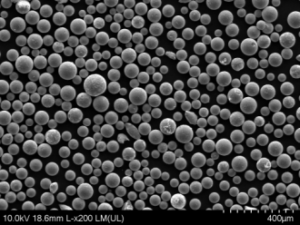El cobre ha sido una piedra angular de la civilización humana, esencial en la ingeniería eléctrica, la construcción y muchas aplicaciones industriales. Cuando hablamos de "polvo de cobre de gran purezanos sumergimos en un mundo de materiales que superan los límites de la pureza y el rendimiento. El polvo de cobre de gran pureza no es un material cualquiera; es una forma especializada de cobre que ofrece cualidades inigualables en cuanto a conductividad, resistencia a la corrosión y gestión térmica, entre otros atributos. En este artículo, exploraremos todo lo que necesita saber sobre el polvo de cobre de gran pureza, desde su composición y características hasta sus diversas aplicaciones y los diferentes modelos disponibles en el mercado. Al final de esta guía, conocerá a fondo este extraordinario material y las ventajas que puede aportar a sus proyectos.
Descripción general del polvo de cobre de gran pureza
El polvo de cobre de alta pureza se refiere al cobre en polvo con niveles de pureza que normalmente superan el 99,9%. Este polvo se utiliza en diversas industrias, como la electrónica, la metalurgia, la ingeniería química y la fabricación avanzada, debido a su conductividad superior, maleabilidad y resistencia a la corrosión. La producción de polvo de cobre de alta pureza implica varios procesos sofisticados, como la electrólisis, la reducción química y la atomización, cada uno de los cuales garantiza la pureza y consistencia del material.
En aplicaciones de alta tecnología, donde el rendimiento no puede verse comprometido, el polvo de cobre de alta pureza destaca por sus excepcionales propiedades. Esta guía pretende ofrecer una visión en profundidad de los diferentes tipos de polvo de cobre de alta pureza disponibles, sus composiciones, características específicas y usos potenciales, junto con un análisis de sus ventajas y limitaciones.
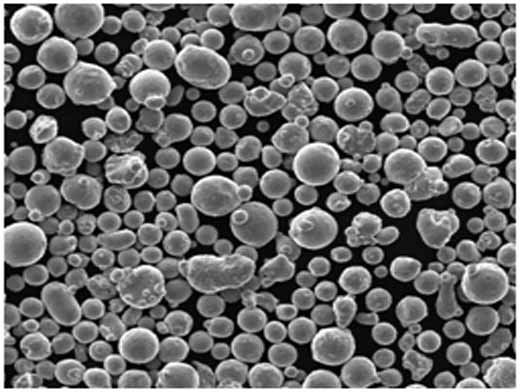
Tipos de polvo de cobre de gran pureza
Los distintos tipos de polvo de cobre de gran pureza se adaptan a aplicaciones específicas. A continuación se muestra una tabla que resume los principales tipos y sus distintas propiedades.
| Tipo | Nivel de pureza | Tamaño de las partículas (µm) | Método de producción | Aplicaciones |
|---|---|---|---|---|
| Cobre electrolítico en polvo | 99.99% | 1-10 µm | Refinado electrolítico | Electrónica, Sinterización |
| Polvo de cobre atomizado | 99.95% | 5-50 µm | Proceso de atomización | Impresión 3D, Gestión térmica |
| Cobre en polvo reducido | 99.9% | 10-100 µm | Reducción química | Metalurgia, catalizadores |
| Cobre precipitado en polvo | 99.95% | 0,5-10 µm | Método de precipitación | Pastas conductoras, Electrónica |
| Nanopolvo de cobre | 99.999% | <100 nm | Síntesis química | Nanotecnología, componentes de alta precisión |
| Cobre en polvo esférico | 99.9% | 15-45 µm | Atomización de gases | Fabricación aditiva, tintas conductoras |
| Polvo de cobre en escamas | 99.9% | 1-15 µm | Fresado | Recubrimientos conductores, lubricantes |
| Cobre en polvo granulado | 99.95% | 50-150 µm | Granulación | Pulvimetalurgia, Rodamientos |
| Cobre en polvo de pureza ultra alta | 99.9999% | 1-5 µm | Refinado electrolítico especial | Fabricación de semiconductores |
| Cobre fino en polvo | 99.97% | 5-20 µm | Trituración mecánica | Recubrimiento de superficies, Materiales de soldadura |
Composición de Cobre en polvo de gran pureza
La composición del polvo de cobre de gran pureza es casi totalmente cobre, pero los oligoelementos presentes pueden afectar significativamente a sus propiedades y rendimiento. Comprender la composición ayuda a seleccionar el tipo adecuado para aplicaciones específicas.
| Componente | Concentración típica | Efecto sobre las propiedades |
|---|---|---|
| Cobre (Cu) | 99.9% – 99.9999% | Proporciona una excelente conductividad eléctrica y térmica |
| Oxígeno (O) | <0,001% | Los niveles más altos pueden reducir la conductividad y favorecer la oxidación |
| Hierro (Fe) | <0,0005% | Los niveles bajos son cruciales para prevenir la corrosión y mantener la ductilidad |
| Plomo (Pb) | <0,0001% | Deben reducirse al mínimo para evitar riesgos medioambientales y sanitarios |
| Azufre (S) | <0,0002% | Afecta a la maleabilidad y al rendimiento general |
| Plata (Ag) | <0,0005% | Puede mejorar la conductividad y la resistencia a la corrosión |
Características del polvo de cobre de gran pureza
Las características del polvo de cobre de gran pureza son las que lo hacen indispensable en tantas aplicaciones avanzadas. A continuación, detallamos algunas de las características más críticas que definen su rendimiento.
1. Conductividad eléctrica
El polvo de cobre de gran pureza es famoso por su excelente conductividad eléctrica, a menudo utilizada en aplicaciones que requieren un flujo eficiente de electrones, como los contactos eléctricos y las tintas conductoras.
2. Conductividad térmica
La capacidad del cobre para conducir eficazmente el calor hace que el polvo de cobre de gran pureza sea el material preferido en disipadores de calor y otros componentes de gestión térmica, sobre todo en electrónica.
3. Resistencia a la corrosión
A pesar de ser altamente conductor, el polvo de cobre de gran pureza también ofrece una excelente resistencia a la corrosión, especialmente cuando está libre de impurezas como el azufre y el hierro.
4. Ductilidad y maleabilidad
La ductilidad y maleabilidad del polvo de cobre de gran pureza permiten darle formas complejas sin que se agriete, lo que es vital en los procesos de sinterización y fabricación aditiva.
5. Niveles de pureza
El nivel de pureza influye directamente en el rendimiento, siendo el polvo de cobre de pureza ultra alta (pureza 99,9999%) esencial para aplicaciones en la fabricación de semiconductores, donde la más mínima impureza puede causar defectos importantes.
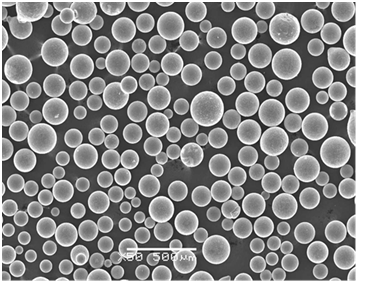
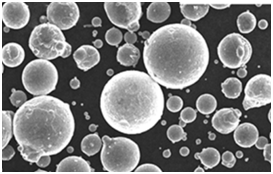


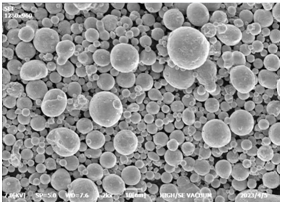
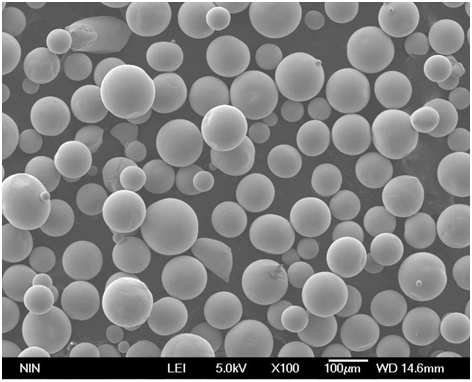
Ventajas de Cobre en polvo de gran pureza
Elegir polvo de cobre de alta pureza ofrece varias ventajas sobre las opciones de menor pureza, especialmente en aplicaciones de alto rendimiento. A continuación se detallan algunas de las ventajas.
| Ventaja | Explicación |
|---|---|
| Conductividad eléctrica superior | Garantiza un flujo de corriente eficaz en los componentes eléctricos y electrónicos. |
| Alta conductividad térmica | Ideal para la disipación de calor en dispositivos de alta potencia y sistemas de gestión térmica. |
| Resistencia a la corrosión | Rendimiento duradero en entornos corrosivos, lo que reduce los costes de mantenimiento. |
| Ductilidad mejorada | Puede moldearse fácilmente en diseños intrincados, esenciales para microcomponentes en electrónica. |
| Grados ultrapuros disponibles | Adecuado para su uso en aplicaciones de semiconductores y nanotecnología en las que la pureza es fundamental. |
Aplicaciones del polvo de cobre de gran pureza
El polvo de cobre de gran pureza se utiliza en infinidad de aplicaciones de diversos sectores. He aquí una tabla que resume algunos de los usos más comunes.
| Industria | Solicitud | Tipo de polvo de cobre utilizado |
|---|---|---|
| Electrónica | Tintas conductoras, placas de circuito impreso, blindaje EMI | Nanopolvo de cobre, polvo de cobre electrolítico |
| Fabricación aditiva | Impresión 3D de piezas metálicas | Cobre en polvo esférico, Cobre en polvo atomizado |
| Metalurgia | Sinterización, pulvimetalurgia | Cobre granulado en polvo, Cobre reducido en polvo |
| Aeroespacial | Componentes de gestión térmica | Cobre en polvo de pureza ultra alta |
| Automotor | Pastillas de freno, Rodamientos | Cobre en polvo fino, cobre en escamas en polvo |
| Nanotecnología | Dispositivos de alta precisión | Nanopolvo de cobre |
| Productos sanitarios | Revestimientos antimicrobianos | Cobre precipitado en polvo |
| Energías renovables | Componentes de células solares | Cobre electrolítico en polvo |
| Soldadura | Pastas de soldadura, varillas de soldadura | Cobre en polvo fino, Cobre en polvo granulado |
| Ingeniería Química | Catalizadores | Cobre reducido en polvo, Cobre precipitado en polvo |
Especificaciones, tamaños, calidades y normas del polvo de cobre de gran pureza
A la hora de seleccionar polvo de cobre de gran pureza para aplicaciones específicas, es fundamental conocer las especificaciones, tamaños, grados y normas. A continuación encontrará una tabla detallada con estos parámetros.
| Especificación | Gama/Grado | Estándar | Opciones de tamaño |
|---|---|---|---|
| Pureza | 99.9% – 99.9999% | ASTM B170, ISO 431 | Personalizable (1 µm - 150 µm) |
| Tamaño de partícula | 0,1 µm - 150 µm | ASTM E11 | Finas, gruesas, nanopartículas |
| Forma | Esférica, en escamas, granulada | ASTM B822 | Varias formas disponibles |
| Densidad | 2,0 - 8,9 g/cm³ | ISO 3923 | Densidad aparente, densidad de toma |
| Fluidez | 5 - 25 s/50g | ISO 4490 | Flujo libre, no flujo libre |
| Contenido de oxígeno | <0,001% | ISO 5832 | Opciones de oxígeno ultrabajo |
| Conductividad | > 99% IACS | ASTM B193 | Grados de alta conductividad |
Proveedores y precios del cobre de gran pureza en polvo
Para comprar cobre en polvo de gran pureza hay que tener en cuenta tanto la reputación del proveedor como la estructura de precios. A continuación se muestra una tabla en la que se resumen los datos de algunos de los principales proveedores y sus precios.
| Proveedor | Producto | Gama de precios (por kg) | Cantidad mínima de pedido (MOQ) | Ubicación |
|---|---|---|---|---|
| Elementos americanos | Cobre en polvo de pureza ultra alta | $500 – $700 | 1 kg | EE.UU. |
| Höganäs AB | Polvo de cobre atomizado | $300 – $500 | 5 kg | Suecia |
| Tekna | Cobre en polvo esférico | $400 – $600 | 2 kg | Canadá |
| Mitsui Minería y Fundición | Cobre electrolítico en polvo | $250 – $450 | 10 kg | Japón |
| Umicore | Nanopolvo de cobre | $700 – $1000 | 0,5 kg | Bélgica |
| CNPC de Shanghai | Cobre en polvo reducido | $200 – $400 | 20 kg | China |
| Polvo metálico GGP | Polvo de cobre en escamas | $150 – $350 | 15 kg | India |
| Kymera Internacional | Cobre en polvo granulado | $300 – $550 | 3 kg | EE.UU. |
| Nanochemazone | Cobre precipitado en polvo | $450 – $650 | 1 kg | Canadá |
| Sumitomo Metal Mining | Cobre fino en polvo | $350 – $550 | 5 kg | Japón |
Ventajas y limitaciones del polvo de cobre de gran pureza
Conocer los puntos fuertes y débiles del polvo de cobre de gran pureza puede ayudar a tomar decisiones informadas sobre su uso.
| Ventajas | Limitaciones |
|---|---|
| Conductividad superior | Mayor coste: Los grados de pureza ultra alta pueden ser caros. |
| Alta gestión térmica | Oxidación: Aunque es resistente a la corrosión, puede oxidarse con el tiempo. |
| Excelente maleabilidad | Manipulación de polvos: Los polvos finos pueden plantear problemas de manipulación y procesamiento. |
| Resistencia a la corrosión | Disponibilidad: Algunos grados de gran pureza pueden tener una disponibilidad limitada en función del proveedor. |
| Amplia gama de aplicaciones | Riesgos sanitarios: Los nanopolvos requieren una manipulación cuidadosa debido a los riesgos potenciales para la salud. |
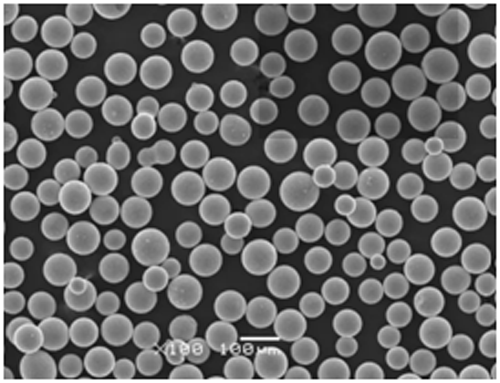
Preguntas más frecuentes
| Pregunta | Respuesta |
|---|---|
| ¿Para qué se utiliza el polvo de cobre de gran pureza? | El polvo de cobre de gran pureza se utiliza en electrónica, metalurgia, fabricación aditiva, nanotecnología, etc., debido a sus excelentes propiedades eléctricas y térmicas. |
| ¿Cómo se fabrica el polvo de cobre de gran pureza? | Se produce mediante métodos como la electrólisis, la reducción química, la atomización y la precipitación, lo que garantiza altos niveles de pureza. |
| ¿Qué niveles de pureza hay disponibles? | Los niveles de pureza suelen oscilar entre 99,9% y 99,9999%, en función de la aplicación. |
| ¿Por qué es caro el polvo de cobre de gran pureza? | El coste refleja los sofisticados procesos de producción necesarios para lograr una gran pureza y el papel fundamental del cobre en las tecnologías avanzadas. |
| ¿Puede utilizarse polvo de cobre de gran pureza en la impresión 3D? | Sí, los polvos esféricos de cobre de gran pureza se utilizan ampliamente en la fabricación aditiva para crear piezas metálicas. |
| ¿Es seguro manipular el polvo de cobre de gran pureza? | Aunque en general son seguros, los nanopolvos requieren una manipulación cuidadosa debido a los riesgos potenciales de inhalación. Deben seguirse los protocolos de seguridad adecuados. |
| ¿Dónde puedo comprar cobre en polvo de gran pureza? | Varios proveedores, como American Elements, Höganäs AB y Tekna, ofrecen polvo de cobre de gran pureza. Los precios varían en función de la pureza, el tamaño de las partículas y el proveedor. |
| ¿Cuáles son las alternativas al polvo de cobre de gran pureza? | Las alternativas incluyen polvo de plata para la conductividad, polvo de aluminio para aplicaciones ligeras y polvo de níquel para usos industriales específicos. |
| ¿Cómo afecta la pureza a las propiedades del polvo de cobre? | Su mayor pureza mejora la conductividad eléctrica y térmica, la resistencia a la corrosión y la ductilidad, por lo que resulta ideal para aplicaciones de alta tecnología. |
| ¿Cuáles son los retos de utilizar polvo de cobre de gran pureza? | Los problemas son el coste más elevado, la posible oxidación y la manipulación de polvos muy finos. |
Conclusión
Polvo de cobre de gran pureza es un material esencial para las industrias que requieren precisión, eficiencia y fiabilidad. Ya sea para fabricar componentes electrónicos de alto rendimiento, permitir técnicas de fabricación avanzadas como la impresión 3D o mejorar la gestión térmica en aplicaciones aeroespaciales, el papel del polvo de cobre de alta pureza no puede ser exagerado. Conocer sus distintos tipos, composiciones, propiedades y aplicaciones puede ayudarle a seleccionar el material adecuado para sus necesidades específicas. Aunque el coste y los problemas de manipulación pueden plantear algunas limitaciones, las ventajas de utilizar polvo de cobre de gran pureza a menudo superan estos inconvenientes, especialmente en aplicaciones de alto rendimiento en las que no se puede comprometer la calidad.
A medida que la tecnología siga evolucionando, la demanda de materiales como el polvo de cobre de gran pureza no hará sino aumentar. Mantenerse informado sobre los últimos avances y proveedores puede proporcionarle una ventaja competitiva, garantizando que sus productos se fabriquen con los mejores materiales disponibles.
